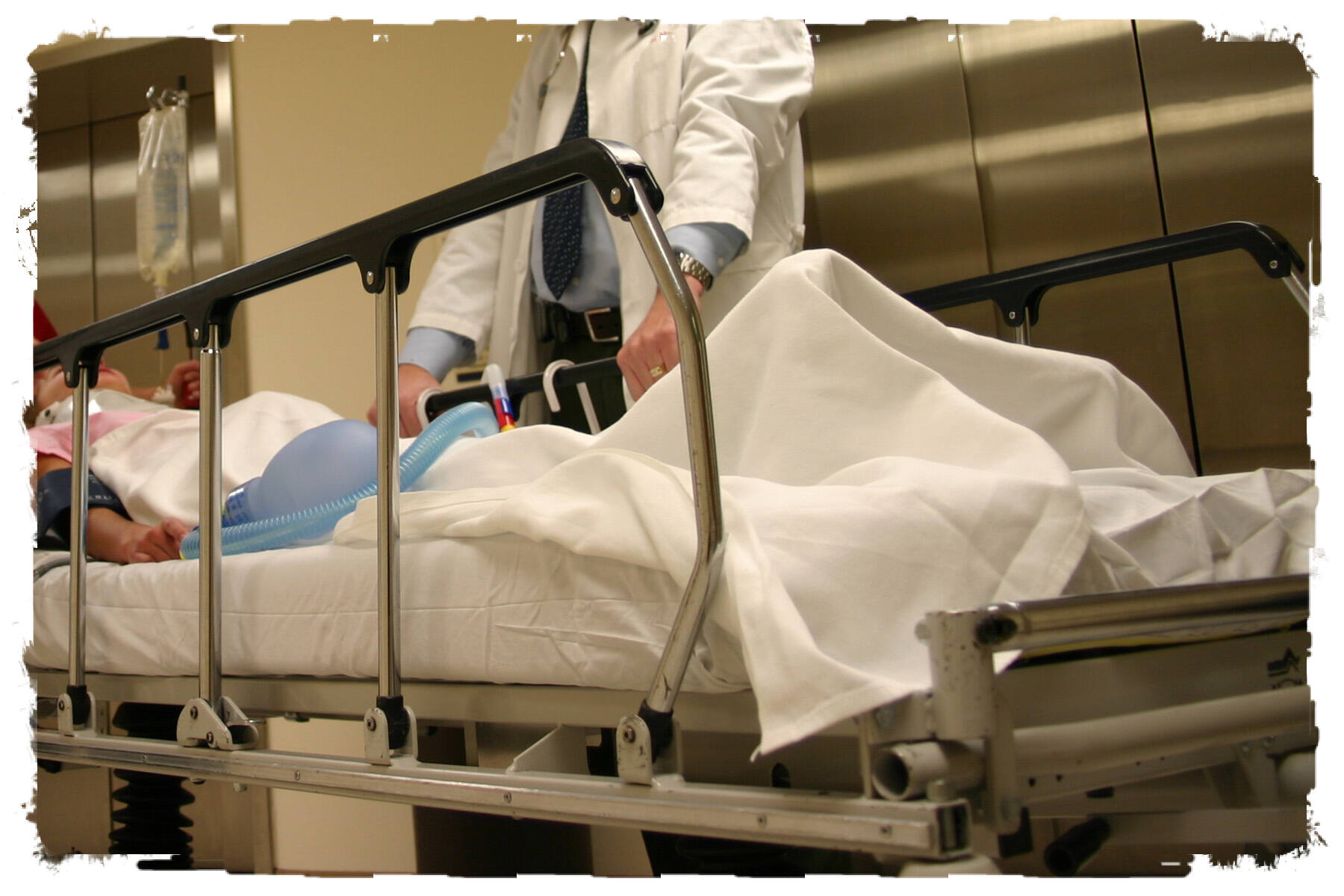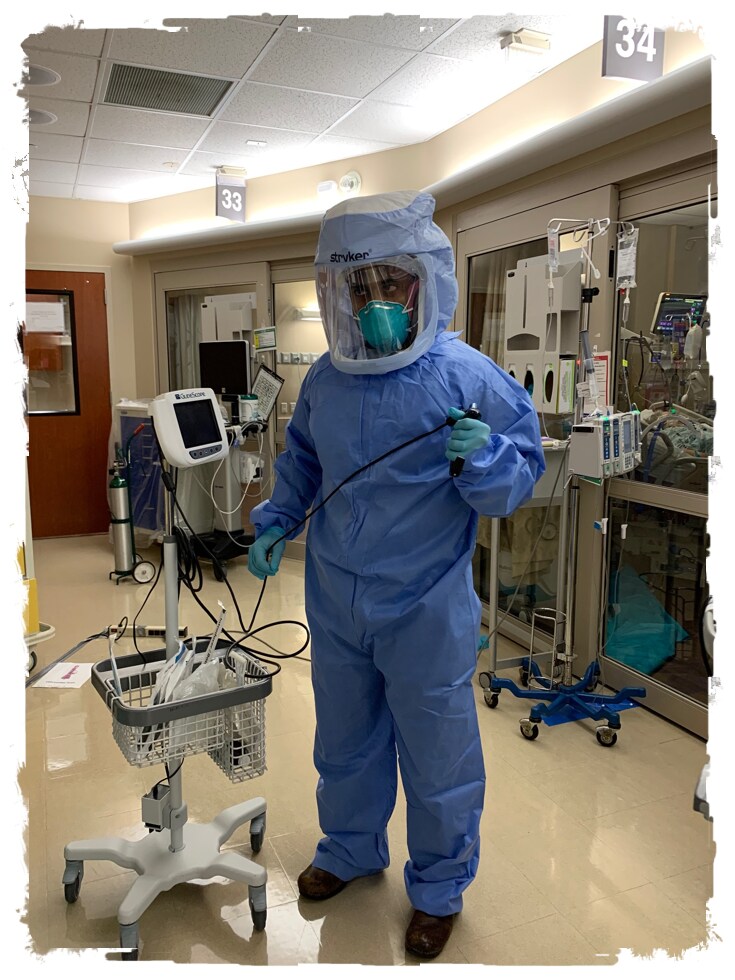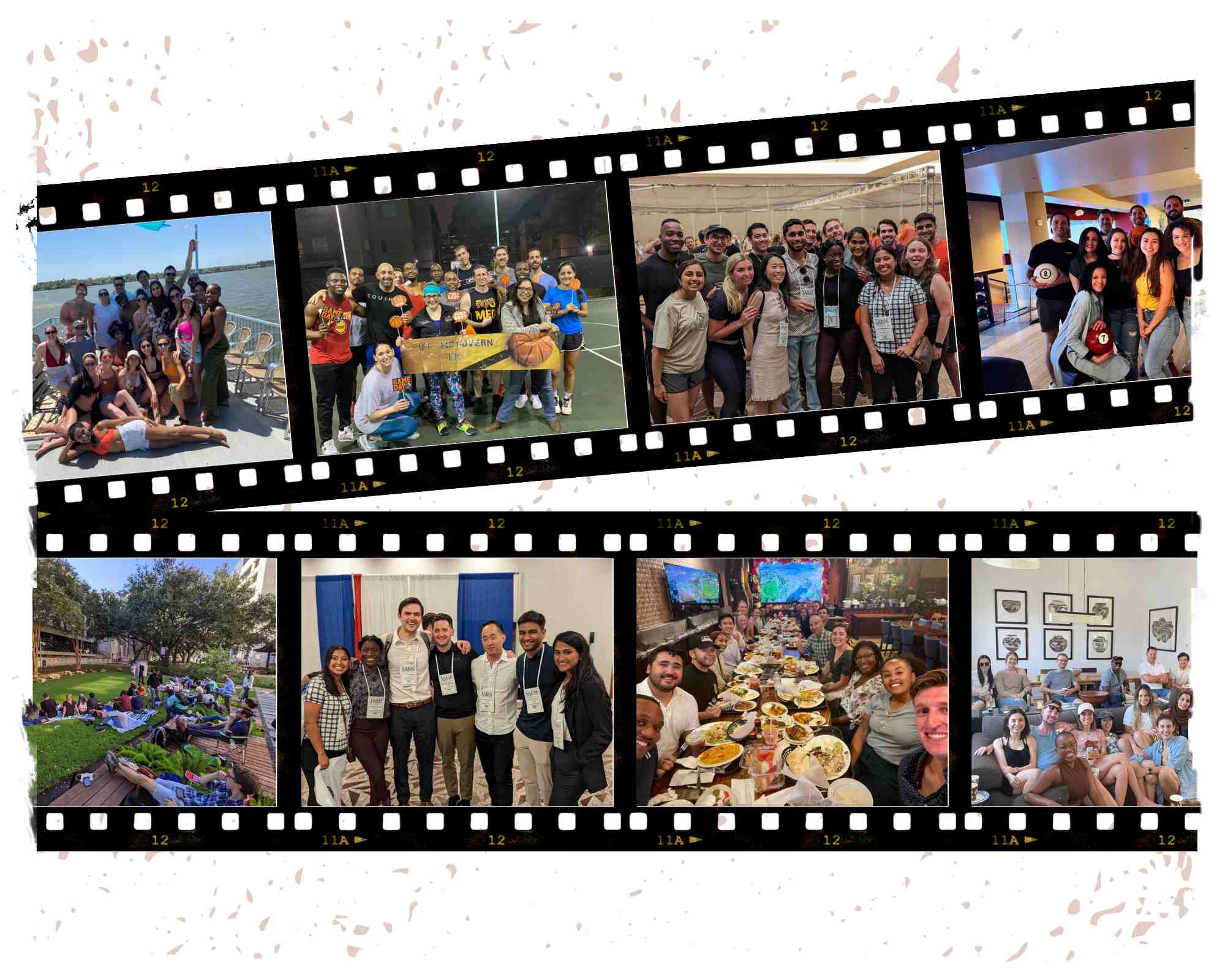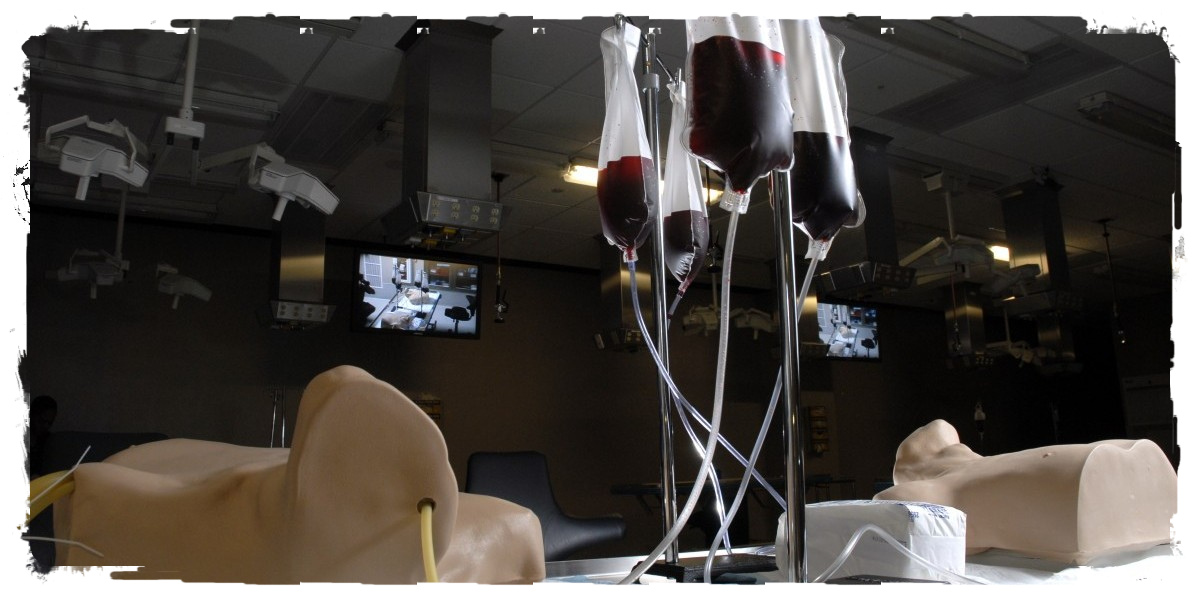Residency Matchmaker: 6 Elements of a Great Emergency Medicine Program
_
Elements Of a Great Residency Program:
-
Diversity of Patients and Pathology
-
Critical Acuity and Patient Volume
-
Appropriate Resident Autonomy
-
Commitment to Resident Experience
-
Vibrant Scholarly Activity
-
EM Plus Factor
Diversity of Patients & Pathology
One incredibly important part of choosing a great Emergency Medicine residency is the diversity of pathology at your clinical sites. Do the residents feel comfortable managing a critical LVAD patient? Are they comfortable managing sick children? How are they at managing those with the least resources?
The more diverse your patients are, the wider breadth of pathology you will see and the more well-rounded you will become. It’s no mystery that certain populations of social, economic, ethnic groups experience different diseases. For example, if you train in an area exclusively with patients with high socioeconomic status, you may be exposed to patients who have routine access to healthcare. You may not encounter patients with extreme electrolyte derangements because they could not get a bus pass to dialysis. The presentations at community hospitals can be very different to your patients who present at academic institutions.

Houston is one of the largest (4th most-populous) and most socioeconomically and culturally diverse cities in the nation.
At UT Houston, we are lucky to be in the center of one of the largest (4th most-populous) and most socioeconomically and culturally diverse cities in the nation. As the international energy capital, we routinely see patients who speak various languages. Additionally, Houston hosts a number of refugees. To ensure well-rounded training, we have a longitudinal pediatric training and see a wide range of pathology across our two sites: Memorial Hermann (the busiest level-one trauma center in the nation which also serves as our quaternary care center) and Lyndon B. Johnson Hospital (Busiest Emergency Department in Houston and a county health system hospital).
Our residents go on to have successful careers at a variety of locations, with our alumni network spanning from coast to coast. After experiencing such a diverse patient population and seeing a wide breadth of pathology, our residents practice comfortably in any setting, ready to take on anything that is thrown their way.
Critical Acuity and Patient Volume
You may have heard that residency is all about “reps”. The more patients you see, the better you become at recognizing patterns of disease. The time is part of it but, how many patients did you see during those hours during your residency training? How many of them did you learn something from?
Although one patient per hour is a widely accepted standard for residents to meet by the time they graduate residency in emergency medicine, it’s best to go to a program where you have the option of more. Residency training is a time to heighten your skills of triage, disposition and quick decision making.

As a result of our volume, our Residents are not competing with others for procedures and critical patients.
At UT Houston, we are fortunate to be at the busiest level one trauma center in the western hemisphere (and the second largest hospital in the largest medical center in the world). Fortunately, there are more than enough patient’s for all of our residents to learn from. As a result of our volume, our residents are not competing with others for procedures and critical patients are not difficult to come by. For example, from day one, residents are encouraged to perform intubations (even difficult ones like nasal or endoscopic intubations). We also have a positive working relationship with our trauma surgery department to ensure our residents get plenty of chest tubes and even have the opportunity to perform thoracotomies.
Finally, our acuity is also quite high, evidenced by our admission rate at Memorial Hermann (45%), compared with a national average rate of roughly 20%.
Resident Autonomy
Autonomy is a necessary part of the residency training process. Medical education research has shown that the benefits of autonomy include increased resident self-confidence, engagement in learning, sense of ownership of patients, and self-directed learning. The level of autonomy that is granted is a balance of educational merit and patient safety. In the end, regardless of the resident, patient, or environment, each program has its own unique culture with regard to resident autonomy.
Some questions to ask during your interviews and when evaluating a program include:
-
“Will I have the opportunity to take on the sickest patients?”

We are an ideal residency program for applicant who want to “get their hands dirty” while still feeling supported by faculty as well as their upper-level residents.
-
“Are there certain patient acuities and procedures that are off limits to junior residents?”
-
“Is graduated responsibility something that you want for yourself or do you want to go to a program where you are encouraged to intubate from day one?”
At UT Houston, we are lucky to have a culture of early resident autonomy. For example, from day one, residents are encouraged to perform intubations (even difficult ones like nasal or endoscopic intubations). We also have a positive working relationship with our trauma surgery department to ensure our residents get plenty of chest tubes and even have the opportunity to perform thoracotomies. As a result of our acuity, our volume and our culture, the majority of our residents get plenty of autonomy during their intern year. We use graded autonomy with regards to faculty oversight, volume carried, and resident supervision of other learners. With this autonomy, we are an ideal residency program for applicant who want to “get their hands dirty” while still feeling supported by faculty as well as their upper-level residents. With this model, our interns are able to pick up and learn to care for the truly critical patient.
Commitment To Resident Experience
What role does the residency program play in the Department of Emergency Medicine and the training site as a whole? Is the hospital / supporting organization education-focused? Does resident feedback make meaningful changes? If residents have trouble or have unforeseen difficulties, how are they supported? What does resident wellness mean to the program?
These are some great things to look for and ask about when researching a residency. While ACGME ensures feedback mechanisms for all residency programs, the mission and track record of organizations can vary. These areas include wellness initiatives (facilitating events and initiatives to promote resident quality of life) as well as fostering leadership in residency (track record of resident-led quality changes or process changes for the department).

We have a number of Wellness initiatives (Resident families, residency class days off) and offer free mental health resources to every Resident.
At UT Houston, we actively solicit feedback from residents about their training. These opinions can be anonymous (through online evaluation forms) or direct. Our program offers resident forums regularly which serve as “States of the Union” of residency training. There are formal lines of communication, but primarily we rely on open dialogue between faculty, residents, and support staff. We have a number of wellness initiatives (Resident families, residency class days off) and offer free mental health resources to every resident. We are immensely proud of our training program and our commitment to continuously innovate, incorporate feedback and grow our program into the very best that our residents deserve.
Resident Education
Although the bulk of residency training is hands-on learning, it is important to supplement this with a well-coordinated didactic education. Programs differ in how this is coordinated. Some do didactic education one hour each day and facilitate that into the resident experience. These conferences typically include curriculum presentations, QI (M&M), board preparation (oral board and written), evidence-based medicine concepts and also administrative seminars (procedural changes in the department).
Many of these things (especially the curriculum presentations) make up what we call “core content”, which describes academic material that we expect every resident to receive exposure and garner understanding of before graduating residency. We use this content to ensure that we are producing confident, competent physicians.
Perhaps the best way to see how a residency’s conference runs is to attend! Now, most programs offer virtual conference sessions that can be joined from around the globe. If you are wondering about a conference, email the coordinator! They may be thrilled to have you join in and it may give you a good idea of conference enthusiasm and substance.
Scholarly Activities
In addition to conference and didactics, research opportunities vary at different programs pretty substantially. Additionally, various programs provide different amounts of funding / travel expenses to present research at conferences.
At UT Houston, we are lucky to have activities which include patient simulations (with a state-of-the art sim center) as well as oral boards practice, which is longitudinal throughout residency. As the busiest level one trauma center in the nation, we have large numbers of active research projects ongoing. We are also home to the massive cardiac arrest database (Texas CARES) which is a powerhouse research hub for resuscitation.

Our state of the art Surgical and Clinical Skills Center
These are a few of the scholarly activities and opportunities that set our program apart from the regular research, textbook writing, and research conferences.
EM Plus – Program that will make you the physician you want to be.
The purpose of residency is to develop residents into the strongest clinician you can be, and the physician that you want to be. What will distinguish your resume from the other emergency medicine doc? What field do you want to pursue?
While your niche may not be known right now, does the residency offer flexible electives? If you met someone at a conference who invited you on a global health trip, would the residency be supportive? These are things to keep in mind.
At UT Houston, we have a large and diverse faculty background with connections all across the nation and around the world. Residents are presented with a wide range of electives and have the opportunity to create their own as well. Our residents can take a Wilderness Elective in the Southern Sierra Nevada of California on and take care of high-altitude pulmonary edema on the slopes of Mt. Whitney. As a resident-led initiative, our program is one of the first to start a Space Medicine Fellowship, where our fellows will learn about caring for patients while in orbit. We take pride in preparing and partnering with both fellows and residents to ensure not only a successful but also a fulfilling career. That can include anything from exploring a niche to networking within the industry, and we want to be there every step of the way.